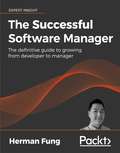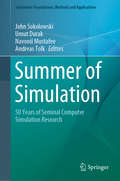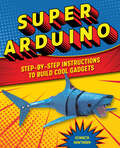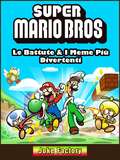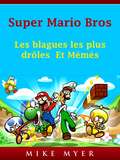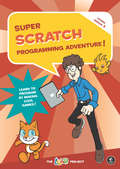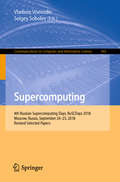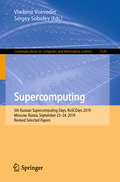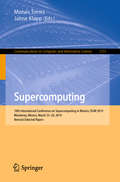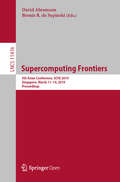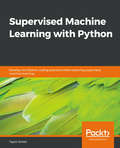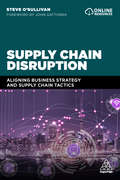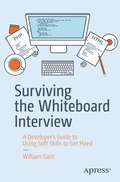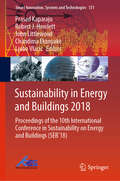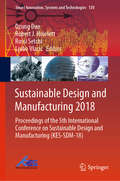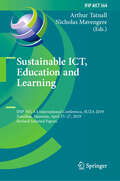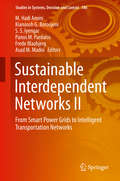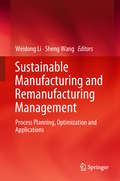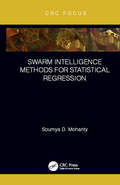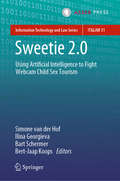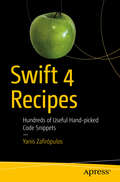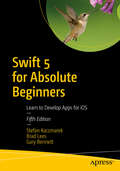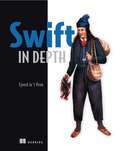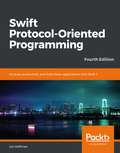- Table View
- List View
The Successful Software Manager: The definitive guide to growing from developer to manager
by Herman FungA developer's guide to successfully managing teams, customers, and software projects Key Features A complete guide to managing developer teams, software projects, customers, and users Transition successfully from a technical role to management Develop crucial skills to enhance your performance and advance your career Book Description The Successful Software Manager is a comprehensive and practical guide to managing software developers, software customers, and the process of deciding what software needs to be built. It explains in detail how to develop a management mindset, lead a high-performing developer team, and meet all the expectations of a good manager. The book will help you whether you've chosen to pursue a career in management or have been asked to "act up" as a manager. Whether you're a Development Manager, Product Manager, Team Leader, Solution Architect, or IT Director, this is your indispensable guide to all aspects of running your team and working within an organization and dealing with colleagues, customers, potential customers, and technologists, to ensure you build the product your organization needs. This book is the must-have authoritative guide to managing projects, managing people, and preparing yourself to be an effective manager. The intuitive real-life examples will act as a desk companion for any day-to-day challenge, and beyond that, Herman will show you how to prepare for the next stages and how to achieve career success. What you will learn Decide if moving to management is right for you Develop the skills required for management Lead and manage successful software development projects Understand the various roles in a technical team and how to manage them Motivate and mentor your team Deliver successful training and presentations Lead the design process with storyboards and personas, and validate your solution Who this book is for Development Managers, Product Managers, Team Leaders, Solution Architects, or IT Directors who want to effectively manage colleagues, customers, potential customers, and technologists.
Summer of Simulation: 50 Years of Seminal Computer Simulation Research (Simulation Foundations, Methods and Applications)
by John Sokolowski Umut Durak Navonil Mustafee Andreas TolkThis book is based on the “Summer Simulation Multi-Conference” (SCSC), which has been a prominent platform for the dissemination of scholarly research in the M&S community for the last 50 years. In keeping with the conference’s seasonal title, the authors have called this half-century “the summer of simulation,” and it has led not only to simulation-based disciplines but also simulation as a discipline. This book discusses contributions from the SCSC in four sections. The first section is an introduction to the work. The second section is devoted to contributions from simulation research fellows who were associated with the SCSC, while the third section features the SCSC’s most influential contributions. Lastly, the fourth section includes contributions from the best papers in the last five years.Features:• A comprehensive volume dedicated to one of the simulation domain’s major conferences: the SCSC• Offers a scientometric analysis of the SCSC• Revisits high-impact topics from 50 years of the SCSC• Includes chapters by simulation research fellows associated with the SCSC• Presents updated best-paper contributions from the recent conferenceThis work will be of value to anyone interested in the evolution of modeling and simulation over the last fifty years. Readers will gain a perspective on what drove this evolution, and develop an understanding of the key contributions that allowed this technology to grow into its own academic discipline and profession.
Super Arduino: Step-by-Step Instructions to Build Cool Gadgets
by Kenneth HawthornGeek out—amazing gadget projects for Arduino beginners. Welcome to the wonderful wired world of Arduino—the flexible open-source electronics platform for creators. Become a coding superhero with Super Arduino—the easiest step-by-step, project-based guide for beginners who want to learn the latest tips and tricks while taking their DIY programming skills to the next level. Let your engineering imagination run wild. In this Arduino project workbook, you'll learn how to create great gadgets like a fabulous flag-waver, flashing disco shoes, a crazy clock, flip-a-switch with Wi-Fi, and even an echolocation distance sensor—like a bat! So what are you waiting for? Plug into Super Arduino and get the following: Calling all coders—Explore these easy-to-follow programming sketches specifically designed for Arduino beginners. Ignite your imagination—You'll make wired wearables, crazy costumes, and even home gadgets using step-by-step Arduino projects that build your skills—and coding confidence. Full-color format—From start to finish, four-color sketch images will help guide you. If you can dream it, there's a good chance you can build it—with this awesome Arduino beginner's guide.
Super Mario Bros: Le Battute & I Meme Più Divertenti
by Hiddenstuff EntertainmentOttieni l’accesso istantaneo alle battute più divertenti su Super Mario Bros! Scoprirai le battute più divertenti di sempre su Super Mario Bros. Questo libro è composto con alcune delle battute più esilaranti su Super Mario Bros. Scopri i personaggi più popolari della Nintendo con battute e meme stupidi, ridicoli e semplicemente meravigliosi su di loro! Scarica la tua copia adesso! Compra oggi la tua copia e scopri tutte le battute più popolari su Super Mario Bros!
Super Mario Bros: Les blagues les plus drôles Et Mémés
by Hiddenstuff EntertainmentObtenez un accès instantané aux blagues les plus marrants de Super Mario Bros! Vous allez découvrir les blagues les plus drôles de Super Mario Bros. Ce livre est empilé avec certaines des blagues les plus rigolos de Super Mario Bros. Découvrez les personnages les plus populaires de Nintendo avec des blagues et des mèmes idiots, ridicules et tout simplement hilarants à leur sujet! Téléchargez votre copie instantanément! Achetez aujourd'hui et découvrez toutes les blagues les plus populaires de mario bros! mots clés Super Mario Bros, Livres Super Mario Bros, Jeux Super Mario Bros, Blagues Super Mario, nintendo
Super Scratch Programming Adventure! (Scratch 3)
by The LEAD ProjectComics! Games! Programming! Now updated to cover Scratch 3.Scratch is the wildly popular educational programming language used by millions of first-time learners in classrooms and homes worldwide. By dragging together colorful blocks of code, kids can learn computer programming concepts and make cool games and animations. The latest version, Scratch 3, features an updated interface, new sprites and programming blocks, and extensions that let you program things like the micro:bit.In Super Scratch Programming Adventure!, kids learn programming fundamentals as they make their very own playable video games. They'll create projects inspired by classic arcade games that can be programmed (and played!) in an afternoon. Patient, step-by-step explanations of the code and fun programming challenges will have kids creating their own games in no time.This full-color comic book makes programming concepts like variables, flow control, and subroutines effortless to absorb. Packed with ideas for games that kids will be proud to show off, Super Scratch Programming Adventure! is the perfect first step for the budding programmer.Covers Scratch 3
Supercomputing: 4th Russian Supercomputing Days, RuSCDays 2018, Moscow, Russia, September 24–25, 2018, Revised Selected Papers (Communications in Computer and Information Science #965)
by Vladimir Voevodin Sergey SobolevThis book constitutes the refereed proceedings of the 4th Russian Supercomputing Days, RuSCDays 2018, held in Moscow, Russia, in September 2018.The 59 revised full papers and one revised short paper presented were carefully reviewed and selected from 136 submissions. The papers are organized in topical sections on parallel algorithms; supercomputer simulation; high performance architectures, tools and technologies.
Supercomputing: 5th Russian Supercomputing Days, RuSCDays 2019, Moscow, Russia, September 23–24, 2019, Revised Selected Papers (Communications in Computer and Information Science #1129)
by Vladimir Voevodin Sergey SobolevThis book constitutes the refereed post-conference proceedings of the 5th Russian Supercomputing Days, RuSCDays 2019, held in Moscow, Russia, in September 2019.The 60 revised full papers presented were carefully reviewed and selected from 127 submissions. The papers are organized in the following topical sections: parallel algorithms; supercomputer simulation; HPC, BigData, AI: architectures, technologies, tools; and distributed and cloud computing.
Supercomputing: 10th International Conference on Supercomputing in Mexico, ISUM 2019, Monterrey, Mexico, March 25–29, 2019, Revised Selected Papers (Communications in Computer and Information Science #1151)
by Moisés Torres Jaime KlappThis book constitutes the refereed proceedings of the 10th International Conference on Supercomputing, ISUM 2019, held in Monterrey, Mexico, in March 2019.The 25 revised full papers presented were carefully reviewed and selected from 78 submissions. The papers are organized in topical sections on HPC architecture, networks, system software, algorithmic techniques, modeling and system tools, clouds, distributed computing, big data, data analytics, visualization and storage, applications for science and engineering, and emer- ging technologies.
Supercomputing Frontiers: 5th Asian Conference, SCFA 2019, Singapore, March 11–14, 2019, Proceedings (Lecture Notes in Computer Science #11416)
by David Abramson Bronis R. de SupinskiThis open access book constitutes the refereed proceedings of the 5th Asian Supercomputing Conference, SCFA 2019, held in Singapore in March 2019. The 6 full papers presented in this book were carefully reviewed and selected from 33 submissions. They cover a range of topics including memory fault handling, linear algebra, image processing, heterogeneous computing, resource usage prediction, and data caching.
Supervised Machine Learning with Python: Develop rich Python coding practices while exploring supervised machine learning
by Taylor SmithTeach your machine to think for itself!Key FeaturesDelve into supervised learning and grasp how a machine learns from dataImplement popular machine learning algorithms from scratch, developing a deep understanding along the wayExplore some of the most popular scientific and mathematical libraries in the Python languageBook DescriptionSupervised machine learning is used in a wide range of sectors (such as finance, online advertising, and analytics) because it allows you to train your system to make pricing predictions, campaign adjustments, customer recommendations, and much more while the system self-adjusts and makes decisions on its own. As a result, it's crucial to know how a machine “learns” under the hood.This book will guide you through the implementation and nuances of many popular supervised machine learning algorithms while facilitating a deep understanding along the way. You’ll embark on this journey with a quick overview and see how supervised machine learning differs from unsupervised learning. Next, we explore parametric models such as linear and logistic regression, non-parametric methods such as decision trees, and various clustering techniques to facilitate decision-making and predictions. As we proceed, you'll work hands-on with recommender systems, which are widely used by online companies to increase user interaction and enrich shopping potential. Finally, you’ll wrap up with a brief foray into neural networks and transfer learning.By the end of this book, you’ll be equipped with hands-on techniques and will have gained the practical know-how you need to quickly and powerfully apply algorithms to new problems.What you will learnCrack how a machine learns a concept and generalize its understanding to new dataUncover the fundamental differences between parametric and non-parametric modelsImplement and grok several well-known supervised learning algorithms from scratchWork with models in domains such as ecommerce and marketingExpand your expertise and use various algorithms such as regression, decision trees, and clusteringBuild your own models capable of making predictionsDelve into the most popular approaches in deep learning such as transfer learning and neural networksWho this book is forThis book is for aspiring machine learning developers who want to get started with supervised learning. Intermediate knowledge of Python programming—and some fundamental knowledge of supervised learning—are expected.
Supply Chain Disruption: Aligning Business Strategy and Supply Chain Tactics
by Steve O'SullivanDisruptive technologies have the power to upend supply chains, adding uncertainty, cost, and complexity to any business. These technologies can also create competitive advantage, but only if organizations strategically build them into their supply chains. Supply Chain Disruption, with a foreword by John Gattorna, provides the vital knowledge that supply chain managers need in order to implement disruptive technologies strategically. This essential book avoids a one-size-fits-all approach and encourages the reader to consider customer needs first before aligning appropriate technologies with each supply chain application.Supply Chain Disruption focuses on information systems, analysing how companies currently integrate and implement potentially disruptive technologies into their supply chain roadmaps. It presents new ways of planning more effectively and efficiently through the use of new tools and techniques, creating improvements in agility, customer service and cost. Online supporting resources include templates for metric-based process models focusing on the key enablers and inhibitors.
Surviving the Whiteboard Interview: A Developer’s Guide to Using Soft Skills to Get Hired
by William GantThe industry standard whiteboard interview can be daunting for developers. Let’s face it: it combines the worst aspects of a typical interview, on-the-spot public speaking, a quiz show, and a dinner party full of strangers judging you—all at once. Brilliant developers can let their nerves get the best of them and completely bomb a whiteboard interview, while inexperienced developers who excel in soft skills can breeze through them. In Surviving the Whiteboard Interview, author William Gant uses his real-world knowledge and expertise to guide you through the psychological roadblocks of a coding test while also providing you with a sample coding challenge. With enough preparation, information, and assured confidence, you can survive a whiteboard interview at any organization. In addition to the benefits listed above, Gant helps you explore how you can create a good soft skills impression that will last beyond the whiteboard test by showing your work ethic, positive attitude, and ability to take and implement criticism effectively. These assets will unequivocally serve other parts of your life outside of an interview context, as well. While Gant does not promise that you will ever truly enjoy interviewing, he does promise to arm you with the proper preparation techniques and knowledge needed to tame the common fears and dread that come along with it. Maximize your career potential and get inspired with Surviving the Whiteboard Interview. The steps to your dream role just might be closer than you think.What You Will LearnPractice both hard and soft skills required to succeed at a whiteboard interview, covering coding tests as well as psychological preparationLearn how to make other aspects of your interview stronger, so you can create a great impressionMaster solving common whiteboard problems in different programming languages Who This Book is ForThis book is primarily for aspiring software developers who are looking for a job in the field. However, it will also be helpful for more seasoned developers who find interviewing painful and want to improve their skills.
Sustainability in Energy and Buildings 2018: Proceedings of the 10th International Conference in Sustainability on Energy and Buildings (SEB’18) (Smart Innovation, Systems and Technologies #131)
by Prasad Kaparaju Robert J. Howlett John Littlewood Chandima Ekanyake Ljubo VlacicThis book contains selected papers from SEB-18, the Tenth International Conference on Sustainability in Energy and Buildings, which was organised by KES International and Griffith University and held in Gold Coast, Australia in June 2018. SEB-18 invited contributions on a range of topics related to sustainable buildings and renewable energy, and explored innovative topics regarding intelligent buildings and cities. Applicable areas included the sustainable design and of buildings, neighbourhoods and cities (built and natural environment); optimisation and modelling techniques; smart energy systems for smart cities; green information communications technology; and a broad range of solar, wind, wave and other renewable energy topics. The aim of the conference was to bring together researchers and government and industry professionals to discuss the future of energy in buildings, neighbourhoods and cities from a theoretical, practical, implementation and simulation perspective. In addition, SEB-18 offered an exciting opportunity to present, interact, and learn about the latest research in Sustainability in Energy and Buildings.
Sustainable Design and Manufacturing 2018: Proceedings of the 5th International Conference on Sustainable Design and Manufacturing (KES-SDM-18) (Smart Innovation, Systems and Technologies #130)
by Dzung Dao Robert J. Howlett Rossi Setchi Ljubo VlacicThis book gathers papers presented at the 5th International Conference on Sustainable Design and Manufacturing (SDM-18), held in Gold Coast, Australia in June 2018. The conference covered a wide range of topics, including: sustainable product design and service innovation, sustainable processes and technology for the manufacturing of sustainable products, sustainable manufacturing systems and enterprises, decision support for sustainability, and the study of the societal impact of sustainability including research on the circular economy. The corresponding application areas are wide and varied. The aim of cutting-edge research into sustainable design and manufacturing is to enable the manufacturing industry to grow by adopting more advanced technologies, and at the same time improve its sustainability by reducing its environmental impact. With these goals in mind, the book provides an excellent overview of the latest research and development in the area of Sustainable Design and Manufacturing.
Sustainable Design and Manufacturing 2019: Proceedings of the 6th International Conference on Sustainable Design and Manufacturing (KES-SDM 19) (Smart Innovation, Systems and Technologies #155)
by Peter Ball Luisa Huaccho Huatuco Robert J. Howlett Rossi SetchiThis volume consists of 52 peer-reviewed papers, presented at the International Conference on Sustainable Design and Manufacturing (SDM-19) held in Budapest, Hungary in July 2019. Leading-edge research into sustainable design and manufacturing aims to enable the manufacturing industry to grow by adopting more advanced technologies, and at the same time improve its sustainability by reducing its environmental impact. The topic includes the sustainable design of products and services; the sustainable manufacturing of all products; energy efficiency in manufacturing; innovation for eco-design; circular economy; industry 4.0; industrial metabolism; automotive and transportation systems. Application areas are wide and varied. The book will provide an excellent overview of the latest developments in the Sustainable Design and Manufacturing Area.
Sustainable ICT, Education and Learning: IFIP WG 3.4 International Conference, SUZA 2019, Zanzibar, Tanzania, April 25–27, 2019, Revised Selected Papers (IFIP Advances in Information and Communication Technology #564)
by Arthur Tatnall Nicholas MavengereThis book constitutes the refereed post-conference proceedings of the First IFIP WG 3.4 International Conference on Sustainable ICT, Education, and Learning, SUZA 2019, held in Zanzibar, Tanzania, in April 2019, in conjunction with the 15th IFIP WG 9.4 International Conference on Social Implications of Computers in Developing Countries.The 27 revised full papers presented in this volume were carefully reviewed and selected from 41 submissions. The papers cover topics such as peer and collaborative learning in informatics; pedagogical approaches to teaching specific informatics courses; workplace learning related to information systems; e-learning; ICTs for development; mobile solutions in learning in the North and South; lifelong learning; applications for disabled students; traversal skills and computational thinking; and teacher education in the global South.
Sustainable Interdependent Networks II: From Smart Power Grids to Intelligent Transportation Networks (Studies in Systems, Decision and Control #186)
by M. Hadi Amini Kianoosh G. Boroojeni S. S. Iyengar Panos M. Pardalos Frede Blaabjerg Asad M. MadniThis book paves the way for researchers working on the sustainable interdependent networks spread over the fields of computer science, electrical engineering, and smart infrastructures. It provides the readers with a comprehensive insight to understand an in-depth big picture of smart cities as a thorough example of interdependent large-scale networks in both theory and application aspects. The contributors specify the importance and position of the interdependent networks in the context of developing the sustainable smart cities and provide a comprehensive investigation of recently developed optimization methods for large-scale networks. There has been an emerging concern regarding the optimal operation of power and transportation networks. In the second volume of Sustainable Interdependent Networks book, we focus on the interdependencies of these two networks, optimization methods to deal with the computational complexity of them, and their role in future smart cities. We further investigate other networks, such as communication networks, that indirectly affect the operation of power and transportation networks. Our reliance on these networks as global platforms for sustainable development has led to the need for developing novel means to deal with arising issues. The considerable scale of such networks, due to the large number of buses in smart power grids and the increasing number of electric vehicles in transportation networks, brings a large variety of computational complexity and optimization challenges. Although the independent optimization of these networks lead to locally optimum operation points, there is an exigent need to move towards obtaining the globally-optimum operation point of such networks while satisfying the constraints of each network properly. The book is suitable for senior undergraduate students, graduate students interested in research in multidisciplinary areas related to future sustainable networks, and the researchers working in the related areas. It also covers the application of interdependent networks which makes it a perfect source of study for audience out of academia to obtain a general insight of interdependent networks.
Sustainable Manufacturing and Remanufacturing Management: Process Planning, Optimization and Applications
by Weidong Li Sheng WangThis book reports on the latest research and applications in the fields of sustainable manufacturing and remanufacturing, as well as process planning and optimization technologies. It introduces innovative algorithms, methodologies, industrial case studies and applications.It focuses on two topics: sustainable manufacturing for machining technologies and remanufacturing of waste electronic equipment, and various methods are covered for each one, including macro process planning, dynamic scheduling, selective disassembly planning and cloud-based disassembly planning. The experimental analysis provided for every method explains the benefits, as well as how they are sustainable for various real-world applications. Further, a theoretical analysis and algorithm design is presented for each, accompanied by the contributors’ relevant research, including:• step-by-step guides; • application scenarios; • relevant literature surveys; • implementation details and case studies; and • critical reviews on the relevant technologies.This book is a valuable resource for researchers in sustainable manufacturing, remanufacturing and product lifecycle management communities, as well as practicing engineers and decision-makers in industry and all those interested in sustainable product development. It is also useful reading material for postgraduates and academics wanting to conduct relevant research, and a reference resource for manufacturing engineers developing innovative tools and methodologies.
Swarm Intelligence Methods for Statistical Regression
by Soumya MohantyA core task in statistical analysis, especially in the era of Big Data, is the fitting of flexible, high-dimensional, and non-linear models to noisy data in order to capture meaningful patterns. This can often result in challenging non-linear and non-convex global optimization problems. The large data volume that must be handled in Big Data applications further increases the difficulty of these problems. Swarm Intelligence Methods for Statistical Regression describes methods from the field of computational swarm intelligence (SI), and how they can be used to overcome the optimization bottleneck encountered in statistical analysis. Features Provides a short, self-contained overview of statistical data analysis and key results in stochastic optimization theory Focuses on methodology and results rather than formal proofs Reviews SI methods with a deeper focus on Particle Swarm Optimization (PSO) Uses concrete and realistic data analysis examples to guide the reader Includes practical tips and tricks for tuning PSO to extract good performance in real world data analysis challenges
Sweetie 2.0: Using Artificial Intelligence to Fight Webcam Child Sex Tourism (Information Technology and Law Series #31)
by Simone van der Hof Ilina Georgieva Bart Schermer Bert-Jaap KoopsThis book centres on Webcam Child Sex Tourism and the Sweetie Project initiated by the children’s rights organization Terre des Hommes in 2013 in response to the exponential increase of online child abuse. Webcam child sex tourism is a growing international problem, which not only encourages the abuse and sexual exploitation of children and provides easy access to child-abuse images, but which is also a crime involving a relatively low risk for offenders as live-streamed webcam performances leave few traces that law enforcement can use. Moreover, webcam child sex tourism often has a cross-border character, which leads to jurisdictional conflicts and makes it even harder to obtain evidence, launch investigations or prosecute suspects.Terre des Hommes set out to actively tackle webcam child sex tourism by employing a virtual 10-year old Philippine girl named Sweetie, a so-called chatbot, to identify offenders in chatrooms. Sweetie 1.0 could be deployed only if police officers participated in chats, and thus was limited in dealing with the large number of offenders. With this in mind, a more pro-active and preventive approach was adopted to tackle the issue. Sweetie 2.0 was developed with an automated chat function to track, identify and deter individuals using the internet to sexually abuse children. Using chatbots allows the monitoring of larger parts of the internet to locate and identify (potential) offenders, and to send them messages to warn of the legal consequences should they proceed further.But using artificial intelligence raises serious legal questions. For instance, is sexually interacting with a virtual child actually a criminal offence? How do rules of criminal procedure apply to Sweetie as investigative software? Does using Sweetie 2.0 constitute entrapment? This book, the outcome of a comparative law research initiative by Leiden University’s Center for Law and Digital Technologies (eLaw) and the Tilburg Institute for Law, Technology, and Society (TILT), addresses the application of substantive criminal law and criminal procedure to Sweetie 2.0 within various jurisdictions around the world.This book is especially relevant for legislators and policy-makers, legal practitioners in criminal law, and all lawyers and academics interested in internet-related sexual offences and in Artificial Intelligence and law.Professor Simone van der Hof is General Director of Research at t he Center for Law and Digital Technologies (eLaw) of the Leiden Law School at Leiden University, The Netherlands. Ilina Georgieva, LL.M., is a PhD researcher at the Faculty of Governance and Global Affairs at Leiden University, Bart Schermer is an associate professor at the Center for Law and Digital Technologies (eLaw) of the Leiden Law School, and Professor Bert-Jaap Koops is Professor of Regulation and Technology at the Tilburg Institute for Law, Technology, and Society (TILT), Tilburg University, The Netherlands.
Swift 4 Recipes
by Yanis ZafirópulosGet the most out of Swift 4 with this carefully compiled collection of select code snippets designed to solve everyday coding problems. This book features the Apress easy-to-use recipe format, with step-by-step instructions, and a no-fuss approach. You'll explore a wide range of topics, all neatly organized according to the language’s own core elements and building blocks. You'll review common topics such as conditionals, loops, functions, classes, closures, and arrays. This book also includes recipes to some more advanced problems found in files, system programming, and algorithms. With Swift 4 Recipes, your programming problems are easily resolved, without wading through paragraphs of text. What You'll LearnCreate if-switch statements, ternary operator, and nil-coalescing Work with numbers, conversions, mathematical functions Access the command line and retrieving system infoWho This Book Is ForMac and iOS developers either looking for a quick problem-solution manual to get started or in search of a quick reference for everyday problems in a dictionary-like fashion.
Swift 5 for Absolute Beginners: Learn to Develop Apps for iOS
by Stefan Kaczmarek Brad Lees Gary BennettStay motivated and overcome obstacles while learning to use Swift Playgrounds and Xcode 10.2 to become a great iOS developer. This book, fully updated for Swift 5, is perfect for those with no programming background, those with some programming experience but no object-oriented experience, or those that have a great idea for an app but haven’t programmed since school.Many people have a difficult time believing they can learn to write iOS apps. Swift 5 for Absolute Beginners will show you how to do so. You'll learn Object-Oriented Programming (OOP) and be introduced to User Interface (UI) design following Apple’s Human Interface Guidelines (HIG) using storyboards and the Model-View-Controller (MVC) pattern before moving on to write your own iPhone and Apple Watch apps from scratch.What You’ll LearnWork with Swift classes, properties, and functionsExamine proper User Interface (UI) and User Experience (UX) designUnderstand Swift data types: integers, floats, strings, and booleansUse Swift data collections: arrays and dictionariesReview Boolean logic, comparing data, and flow controlUse the Xcode debugger to troubleshoot problems with your appsStore data in local app preferences and Core Data databases Who This Book Is ForAnyone who wants to learn to develop apps for the Mac, iPhone, iPad, and Apple Watch using the Swift programming language. No previous programming experience is necessary.
Swift in Depth
by Tjeerd in 't VeenSummary Now updated for Swift 5! Swift is more than just a fun language to build iOS applications with. It features a host of powerful tools that, if effectively used, can help you create even better apps with clean, crystal-clear code and awesome features. Swift in Depth is designed to help you unlock these tools and quirks and get developing next-gen apps, web services, and more! Purchase of the print book includes a free eBook in PDF, Kindle, and ePub formats from Manning Publications. About the Technology It's fun to create your first toy iOS or Mac app in Swift. Writing secure, reliable, professional-grade software is a different animal altogether. The Swift language includes an amazing set of high-powered features, and it supports a wide range of programming styles and techniques. You just have to roll up your sleeves and learn Swift in depth. About the Book Swift in Depth guides you concept by concept through the skills you need to build professional software for Apple platforms, such as iOS and Mac; also on the server with Linux. By following the numerous concrete examples, enlightening explanations, and engaging exercises, you'll finally grok powerful techniques like generics, efficient error handling, protocol-oriented programming, and advanced Swift patterns. Author Tjeerd in 't Veen reveals the high-value, difficult-to-discover Swift techniques he's learned through his own hard-won experience. What's inside Covers Swift 5 Writing reusable code with generics Iterators, sequences, and collections Protocol-oriented programming Understanding map, flatMap, and compactMap Asynchronous error handling with ResultBest practices in Swift About the Reader Written for advanced-beginner and intermediate-level Swift programmers. About the Author Tjeerd in 't Veen is a senior software engineer and architect in the mobile division of a large international banking firm. Table of Contents Introducing Swift in depth Modeling data with enums Writing cleaner properties Making optionals second nature Demystifying initializers Effortless error handling Generics Putting the pro in protocol-oriented programming Iterators, sequences, and collections Understanding map, flatMap, and compactMap Asynchronous error handling with Result Protocol extensions Swift patterns Delivering quality Swift code Where to Swift from here
Swift Protocol-Oriented Programming: Increase productivity and build faster applications with Swift 5, 4th Edition
by Jon HoffmanEmbrace the Protocol-Oriented Programming paradigm, for better code maintainability and increased performance, with Swift programming. Key Features Leverage the power of Protocol-Oriented Programming in your applications Leverage generics to create very flexible frameworks Learn how to implement common design patterns in a protocol-oriented way Book Description Protocol-oriented programming is an incredibly powerful concept at the heart of Swift's design. Swift's standard library was developed using POP techniques, generics, and first-class value semantics; therefore, it is important for every Swift developer to understand these core concepts and take advantage of them. The fourth edition of this book is improved and updated to the latest version of the Swift programming language. This book will help you understand what protocol-oriented programming is all about and how it is different from other programming paradigms such as object-oriented programming. This book covers topics such as generics, Copy-On-Write, extensions, and of course protocols. It also demonstrates how to use protocol-oriented programming techniques via real-world use cases. By the end of this book, you will know how to use protocol-oriented programming techniques to build powerful and practical applications. What you will learn Learn the differences between object-oriented programming and protocol-oriented programming Understand why value types should be prioritized over reference types Delve into protocols, protocol inheritance, protocol composition, and protocol extensions Learn how to implement COW (Copy-On-Write) within your custom value types Understand how memory management works in Swift and how to avoid common pitfalls Design applications by starting with the protocol rather than the implementation Who this book is for This book is intended for Swift developers who have, at minimum an introductory knowledge of the Swift programming language and would like to understand how they can use Protocol-Oriented Programming techniques in their applications.
